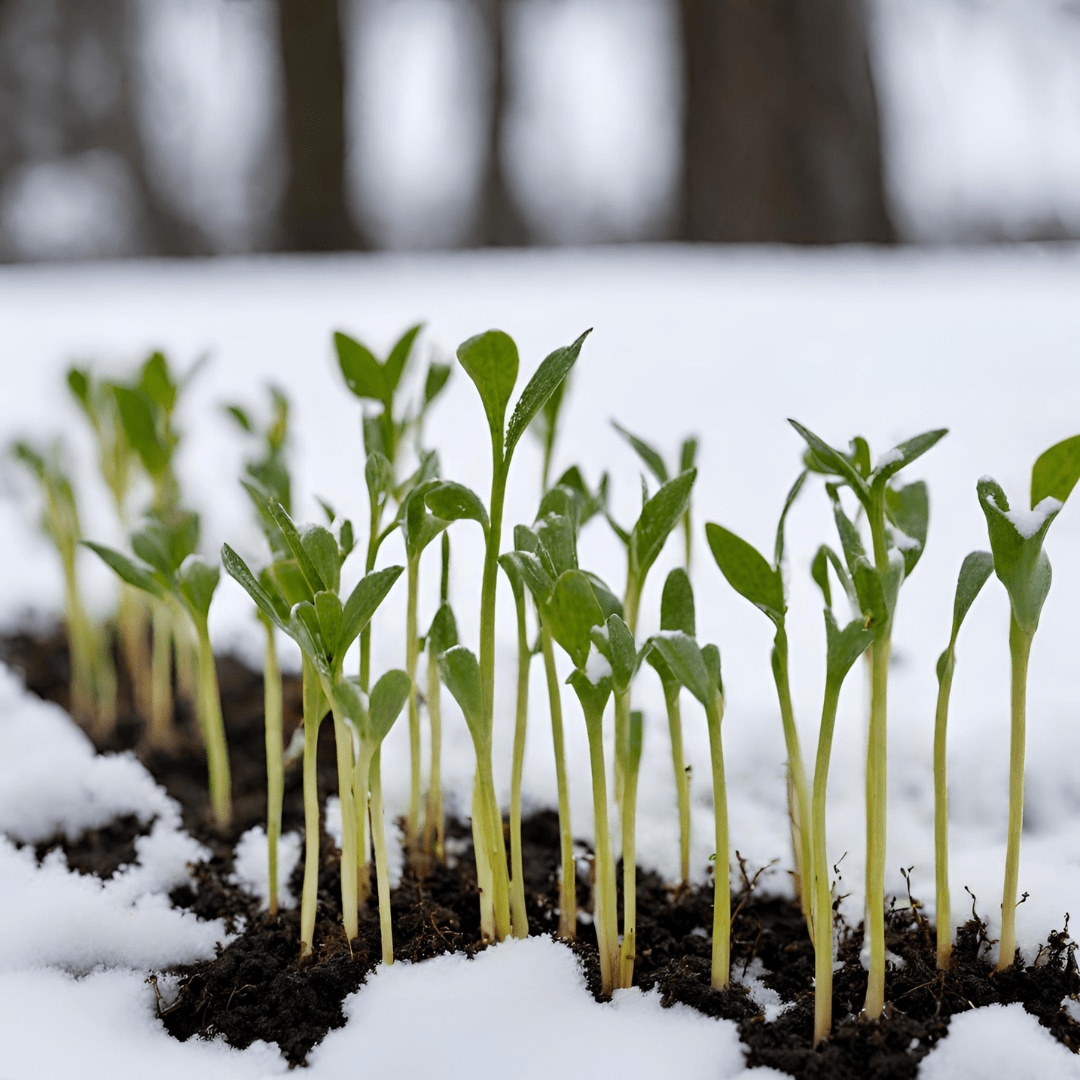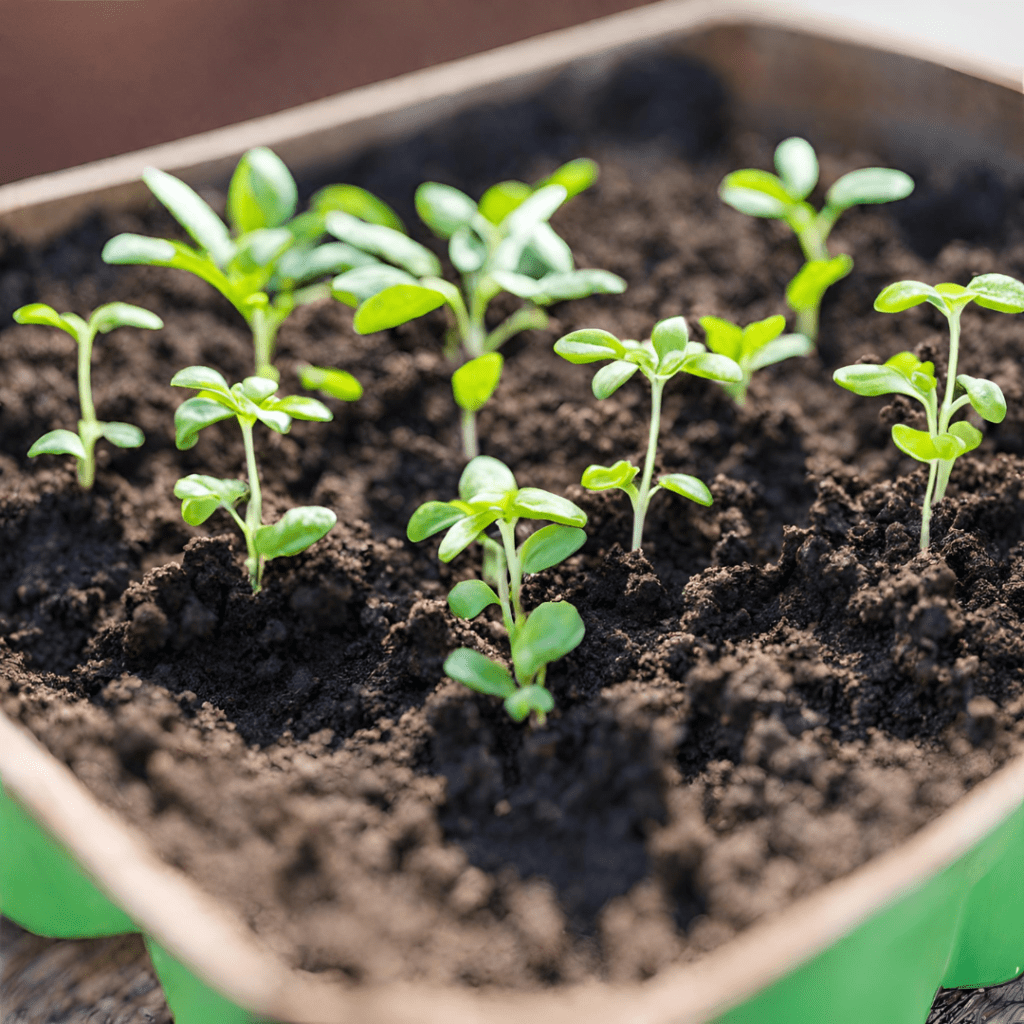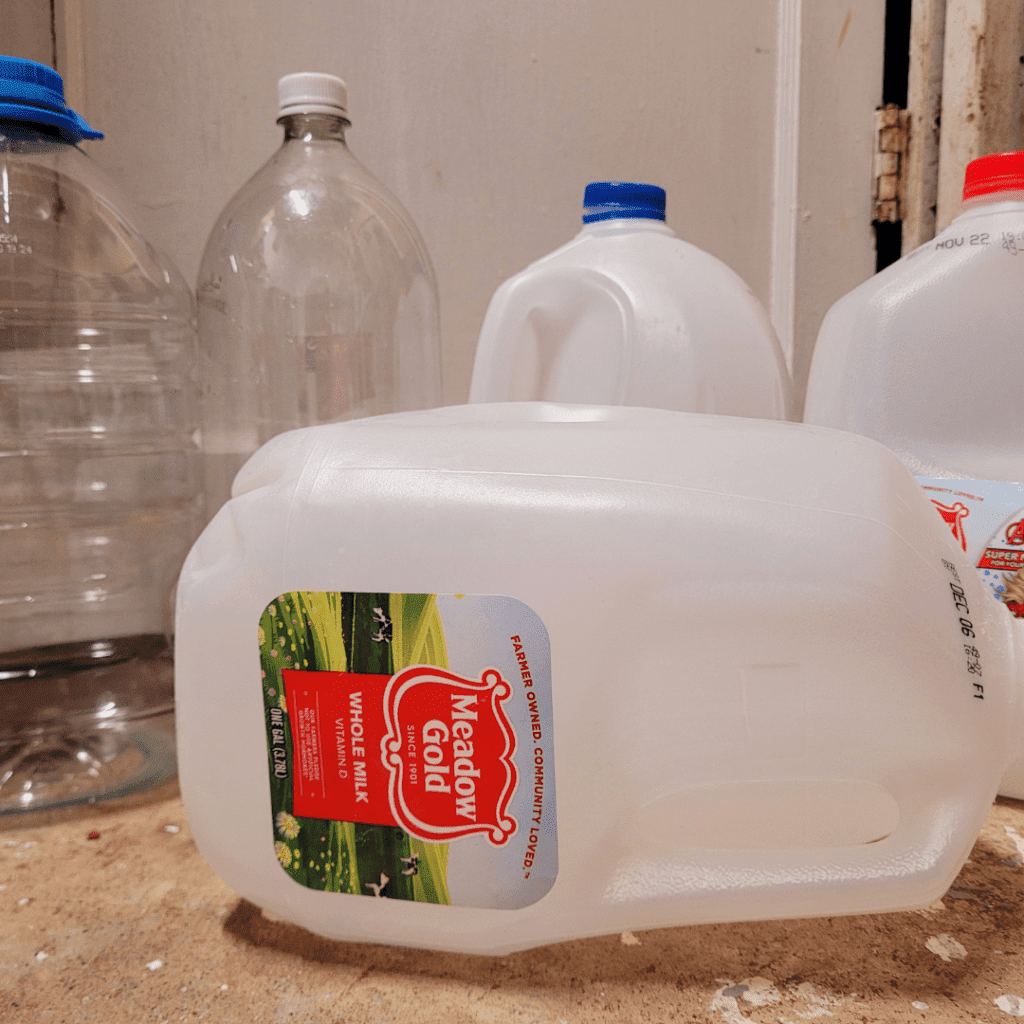Learn how to decide if winter sowing is right for your garden and get a head start on spring planting. Discover which seeds thrive outdoors in cold conditions, the benefits of winter sowing for hardy seedlings, and tips to determine if your climate, space, and gardening goals make this method a perfect fit for you.
Winter sowing is a unique and cost-effective method of starting seeds that utilizes the natural cycles of winter to kickstart the germination process. As gardeners, we are often eager to get a head start on our planting, and winter sowing offers an enticing solution. This article will guide you through the ins and outs of winter sowing, helping you decide if it’s the right technique for your garden.
From understanding the benefits to assessing your garden’s suitability, selecting suitable seeds, and providing a step-by-step guide, I aim to equip you with the knowledge to successfully implement winter sowing in your gardening endeavors.
This is a pinnable post. Tap or hover over any image in this post to pin to your Pinterest Boards.
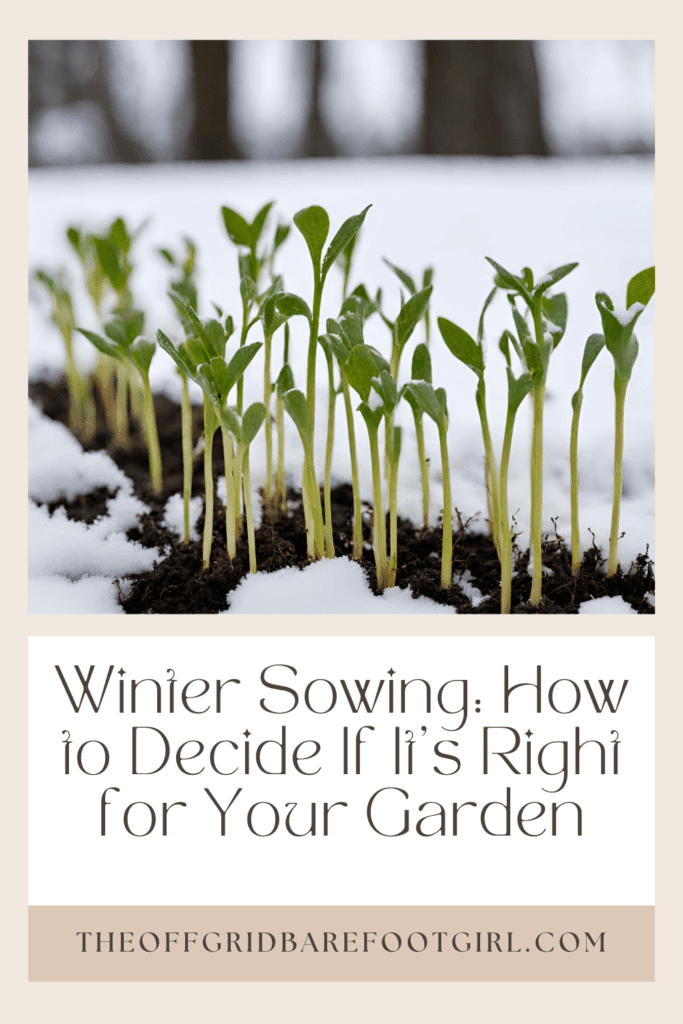
Introduction to Winter Sowing
What is Winter Sowing?
Winter sowing is a gardening technique that allows you to start seeds outdoors during the colder months, using mini-greenhouses made from recycled materials. It’s a budget-friendly and low-maintenance way to get a head start on your garden without the need for complicated indoor setups or expensive equipment.
History and Origins of Winter Sowing
This gardening method has been around for quite some time, with gardeners embracing this method as a way to work with nature’s cycle. It is said to have originated in northern climates where the cold winters made it difficult to start seeds indoors. Over time, the technique has gained popularity and is now practiced by gardeners all over the world.
Benefits of Winter Sowing
Advantages of Winter Sowing
Winter sowing offers several advantages that make it an attractive option for gardeners. Firstly, it mimics the natural conditions that seeds require for germination, providing them with the chilling period they need to break dormancy. This leads to stronger, healthier plants. Additionally, this gardening method saves you time and effort, as there is no need for daily monitoring or fussing over seedlings indoors.
Comparison with Traditional Seed Starting Methods
Compared to traditional seed starting methods, winter sowing has its own unique benefits. Unlike indoor seed starting, which requires artificial lighting and controlled environments, this gardening method allows seeds to experience natural fluctuations in temperature and light. This can result in hardier plants that are better equipped to handle the challenges of outdoor growing conditions.
Assessing Your Garden’s Suitability for Winter Sowing
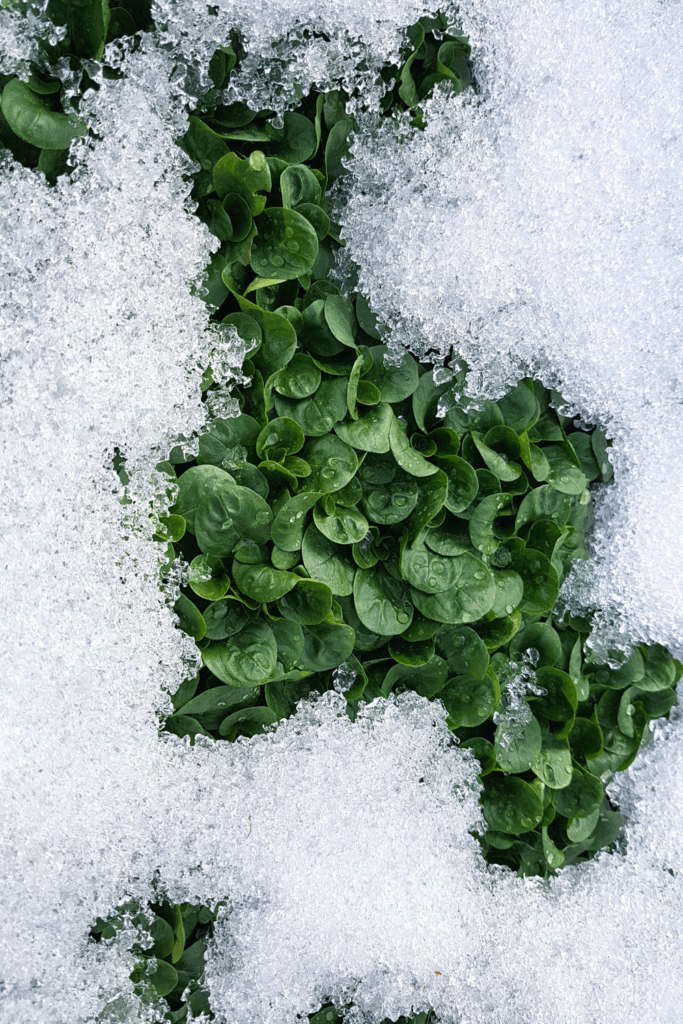
Climate Considerations
Before diving into winter sowing, it’s important to consider whether your climate is suitable for this method. This gardening method works best in regions with cold winters that naturally provide the seeds with the necessary chilling period. If you live in a mild or tropical climate, you may need to adjust the timing or consider alternative methods.
Space and Light Requirements
Another factor to consider is the amount of space and sunlight available in your garden. This gardening method requires an outdoor area where the mini-greenhouses can be placed, preferably in a spot that receives sufficient sunlight. Assess the space you have and make sure it’s adequate for your gardening needs.
Soil and Site Preparation
Preparing the soil and site for this gardening method is crucial for success. Ensure that the soil is well-draining and free of debris. Clear any weeds or grass from the designated area to provide a clean environment for your seeds to grow. Consider using a gentle layer of compost on top to improve soil fertility and drainage.
Selecting Suitable Seeds for Winter Sowing
Annuals vs Perennials
When selecting seeds for this gardening method, it’s important to consider the type of plants you want in your garden. Annuals, which complete their life cycle in one growing season, are generally easier to start through this gardening method. Perennials, on the other hand, require more patience as they may take longer to establish and bloom.
Cold-Tolerant and Hardy Varieties
Choose seeds that are known to be cold-tolerant and hardy. These varieties are more likely to withstand the unpredictable winter weather and ensure a successful germination process. Look for plants that are native or well-adapted to your region’s climate.
Choosing Seeds for Your Zone
Lastly, take into account your USDA hardiness zone when selecting seeds for this gardening method. Different plants thrive in different zones, so make sure to choose seeds that are suitable for your specific climate. This will increase the chances of successful growth and a bountiful garden.
Step-by-Step Guide to Winter Sowing
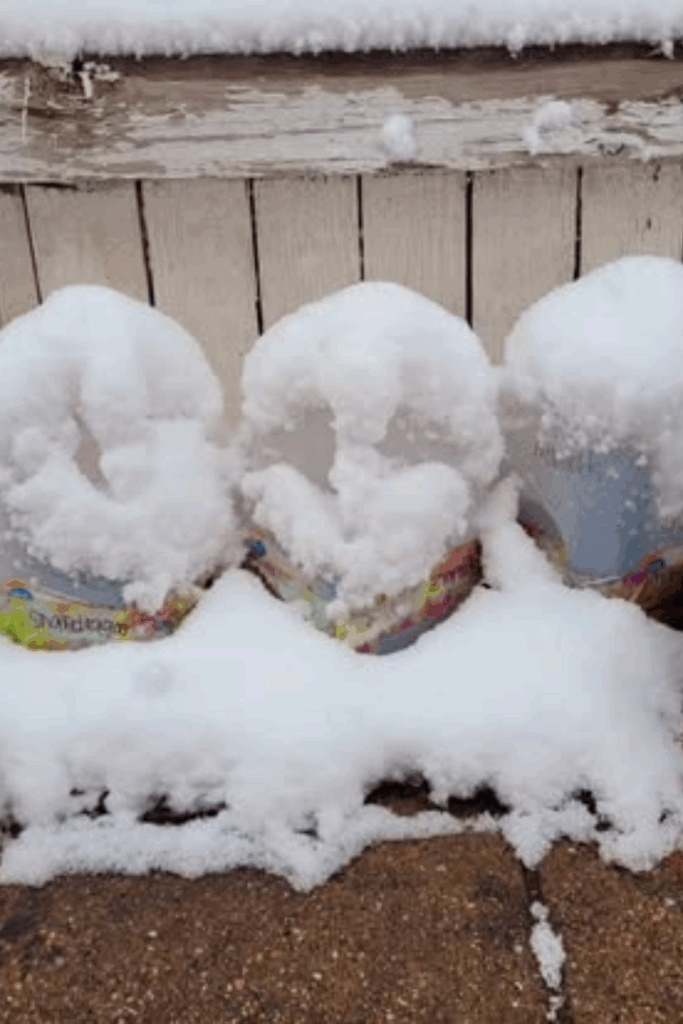
Preparing Containers and Materials
Although this gardening method is a fun and easy way to start your garden early, it does require a bit of preparation. First, gather your containers. You can use anything from plastic milk jugs and soda bottles to takeout containers and yogurt cups. Just make sure to poke some drainage holes in the bottom. Next, gather your potting mix and seeds. Choose seeds that can tolerate cold temperatures and are suitable for your growing zone. Fill your containers with the potting mix, leaving some space at the top.
Sowing Seeds and Providing Proper Moisture
Now comes the fun part – sowing the seeds! Follow the instructions on the seed packet for proper sowing depth and spacing. It’s important not to overcrowd the seeds, as this can lead to competition for resources and stunted growth. After sowing, gently water the containers to ensure the soil is moist, but not soggy. Remember to label each container with the type of seed you’ve planted.
Creating and Maintaining Mini Greenhouses
To create mini greenhouses for your winter-sown seeds, simply place the containers in a tray or shallow dish and cover them with a clear plastic lid or wrap them in clear plastic. This will create a greenhouse effect, trapping heat and moisture to help the seeds germinate. Place the containers outdoors in a sunny spot, preferably against a south-facing wall or fence for added warmth. Check on them regularly and remove the plastic cover if the temperature gets too high or condensation builds up.
Common Mistakes to Avoid
Overcrowding and Poor Seed Spacing
In the excitement of sowing seeds, it’s easy to get carried away and sprinkle them everywhere. However, overcrowding your containers can lead to cramped growth and weaker plants. Give each seed enough space to spread its roots and grow to its full potential.
Inadequate Ventilation and Airflow
While it’s important to keep your winter-sown seeds warm, it’s equally important to provide adequate ventilation and airflow. Stagnant air can lead to mold and fungal issues. Make sure to remove the plastic cover or create small holes for air circulation. This will help prevent your little seedlings from suffocating.
Ignoring Weather and Temperature Changes
As much as we would like to control the weather, Mother Nature has a mind of her own. Keep an eye on the forecast and be prepared to protect your winter-sown seeds from extreme cold or unexpected temperature swings. Cover them with blankets or move them to a sheltered area if necessary.
Troubleshooting and Tips for Successful Winter Sowing
Dealing with Mold and Fungal Issues
Mold and fungi can be pesky guests in your containers. To prevent their unwelcome arrival, make sure you’re using well-draining soil and avoid overwatering. If you spot any mold or fungus, remove it carefully and increase the airflow around your containers.
Protection against Pests and Wildlife
Just like us, pests and wildlife can’t resist tasty greens. To protect your winter-sown seedlings, place a mesh or small fences around them to deter curious critters. You can also try using natural deterrents like coffee grounds or garlic spray.
Transplanting and Caring for Winter-Sown Seedlings
Once your seedlings have grown strong enough, it’s time to transplant them into their permanent home in the garden. Before doing so, harden them off by gradually exposing them to outdoor conditions for a few hours each day. This will help them adjust to the harsh realities of the real world. When planting, make sure to give them plenty of space and provide adequate water and sunlight.
Conclusion: Is Winter Sowing Right for Your Garden?
This fun gardening method is a fantastic option for gardeners who want to get a head start on the growing season. It’s cost-effective, low-maintenance, and can yield great results with a little care. However, it may not be suitable for everyone, particularly those with limited outdoor space or extreme weather conditions. Consider your own gardening goals, available resources, and climate before diving into this gardening method. Whether you choose to embrace this method or not, remember that the most important thing is to enjoy the journey and have fun nurturing your plants.
In reality, this gardening method can be a game-changer for many gardeners, offering numerous benefits and a cost-effective way to start seeds early. However, it’s important to assess your garden’s suitability and consider factors such as climate, space, and seed selection. By following the step-by-step guide and avoiding common mistakes, you can increase your chances of success with this gardening method. Whether you’re a seasoned gardener or just starting out, give this gardening method a try and see if it brings a new level of productivity and joy to your garden.
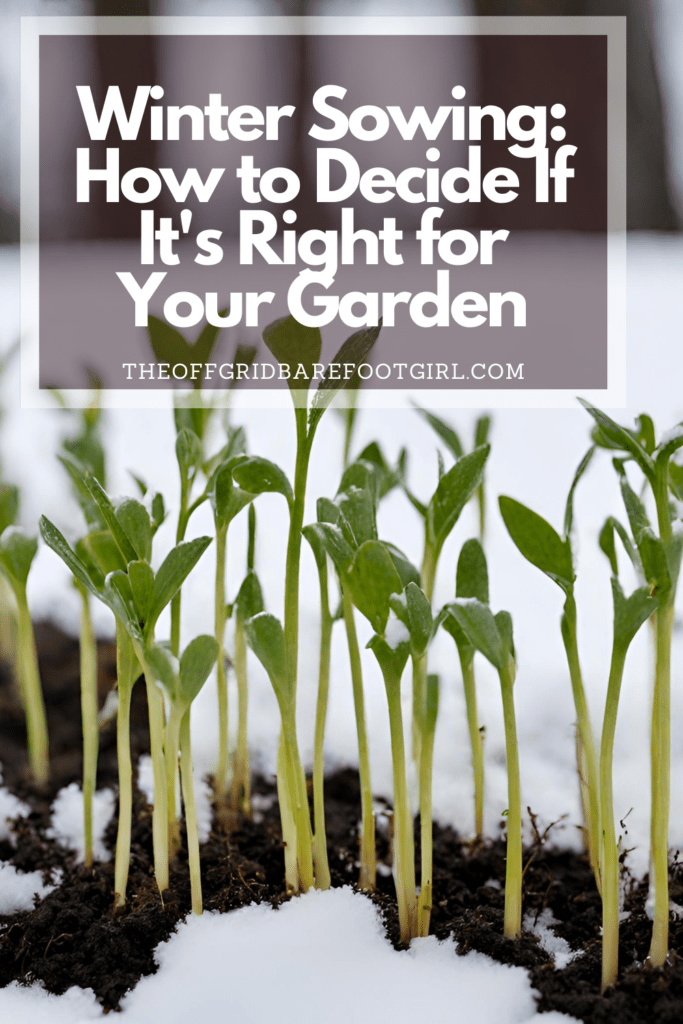
Frequently Asked Questions
1. Can I winter sow any type of seeds?
Winter sowing is suitable for a wide range of seeds, including annuals, perennials, vegetables, and herbs. However, certain seeds may have specific requirements or may not be well-suited for this method. It is best to research and select seeds that are known to be successful with this gardening method.
2. Do I need any special equipment for winter sowing?
No, this gardening method does not require any specialized or expensive equipment. Most of the materials needed, such as containers, soil, and seeds, are commonly found in a gardener’s toolkit. However, you will need transparent or translucent containers that can act as mini greenhouses and protect the seeds. Milk jugs and 2-liter bottlers make perfect winter sowing greenhouses!
3. Can I start winter sowing in any climate?
Winter sowing is adaptable to various climates, but it is important to consider the specific requirements of your region. Some climates may have longer or harsher winters, which may affect the success of winter sowing. It is advisable to research and understand the climate requirements for winter sowing in your specific area.
4. Can I transplant winter-sown seedlings into the ground directly?
Yes, one of the advantages of winter sowing is that it naturally hardens off seedlings, making them more resilient to outdoor conditions. Once the seedlings have grown and the danger of frost has passed, they can be transplanted directly into the ground. However, it is essential to acclimate them gradually to the outdoor environment before transplanting.
Summary
I hope I have inspired you to try your skills at winter sowing with these tips and products.
If you were encouraged by this post, I invite you to check out my FREE Printables Page for fun free printables, planners, and charts.
ENTER MY FREE Printables Page HERE
Here are some more of my winter gardening inspiration posts to check out!
How to Build Mini Greenhouses for Winter Sowing
How to Repurpose Everyday Items into Winter Sowing Containers
Root Vegetables That Thrive in Winter Sowing: Ultimate List
How to Grow Cold Hardy Greens for Winter Sowing
Top Winter-Sowing Vegetables for a Head Start in the Garden
Getting Started with Winter Sowing: The Ultimate Guide
The Benefits of Successful Winter Sowing for Vegetables in Containers
The Ultimate Guide to Choosing the Best Soil for Winter Sowing
Planning Your Garden: How to Plan a Vegetable Garden: Expert Green Thumb Tips!
Winterizing the Garden: How to Winterize Your Vegetable Garden: Step-by-Step Checklist
Mulching the Garden: How to Make Leaf Litter Mulch
How to Grow a Fall Garden: 9 Best Fall Crops
Blessings,
The Off Grid Barefoot Girl

